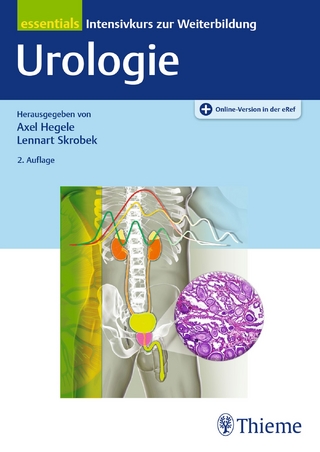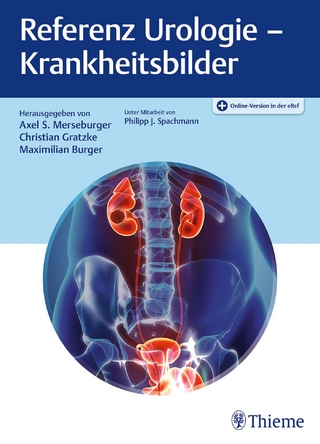
Shock Wave Lithotripsy
Kluwer Academic / Plenum Publishers (Verlag)
978-0-306-43112-8 (ISBN)
- Titel ist leider vergriffen;
keine Neuauflage - Artikel merken
Following the third annual symposium on extracorporeal shock wave lithotripsy in March of 1987, a number of participants and attendees requested that the information presented at the meeting be made available. Therefore, plans were made to publish the proceedings of the next meeting which occurred March 5 and 6, 1988. The Methodist Hospi tal ofIndiana' s 4th Symposium on Shock Wave Lithotripsy: State of the Art was the best attended meeting to date with over 650 registrants from 36 states and 24 countries.
1 Extracorporeal Shock Wave Lithotripsy: Past, Present, and Future.- I: Ureteral Stone Management.- 2 Extracorporeal Shock Wave Lithotripsy of Ureteral Stones in the Upper, Mid, and Lower Ureter.- 3 Treatment of Ureteral Calculi by Extracorporeal Shock Wave Lithotripsy in a Multi-Use Center.- 4 In Situ Extracorporeal Shock Wave Lithotripsy for Lower Ureteric Stones.- 5 Value of Stents in Management of Ureteral Stones with Extracorporeal Shock Wave Lithotripsy.- 6 Extracorporeal Shock Wave Lithotripsy Using Double-J Stents: Technique, Pitfalls, Results, and Complications.- 7 Extracorporeal Shock Wave Lithotripsy in the Prone Position: A Useful Technique in Anteriorly Situated Stones.- 8 Extracorporeal Shock Wave Lithotripsy in the Prone Position: Technique, Indications, Results.- 9 Management of Complications Following Extracorporeal Shock Wave Lithotripsy: Steinstrasse.- 10 Current Management Concepts in the Treatment of Ureteral Stones.- 11 Techniques of Laser Lithotripsy.- 12 Pulsed Dye Laser Treatment of Ureteral Calculi: Update 1988.- II: Large Stone Management.- 13 Advances in Management of Staghorn Calculi.- 14 Treatment of Renal Staghorn Calculi with Extracorporeal Shock Wave Lithotripsy Monotherapy Using the Rocco Extra-Large Catheter.- 15 A Simple Guideline for Treating Staghorn Stones.- 16 Extracorporeal Shock Wave Lithotripsy of Staghorn and Large Calculi.- 17 Percutaneous Nephrolithotomy and ESWL versus Ureteral Stent and ESWL for the Treatment of Large Renal Calculi and Staghorn Calculi: Preliminary Results of a Prospective, Randomized Study.- 18 Anesthesia-Free ESWL Monotherapy with Double-J Stents versus Percutaneous Nephrostolithotomy and ESWL: A Combined Approach in Staghorn Disease-Preliminary Results of a Prospective, Randomized Study.- 19 Staghorn Stone Treatment with Extracorporeal Shock Wave Lithotripsy: The Fate of Residual Stones.- 20 Infectious Staghorn Stones Treated with Extracorporeal Shock Wave Lithotripsy and Hemiacidrin.- 21 Continuous Flow Extracorporeal Shock Wave Lithotripsy.- III: ESWL Treatment Results.- 22 Extracorporeal Shock Wave Lithotripsy for Renal Calculi: Effect of Shock Wave Exposure on Renal Function Evaluated by 99mTc-DTPA Renogram.- 23 Effect of Extracorporeal Shock Wave Lithotripsy on Renal function.- 24 The Safety of Extracorporeal Shock Wave Lithotripsy in the High-Risk Patient and in the Patient with Compromised Renal function.- 25 Outcome of Extracorporeal Shock Wave Lithotripsy in Patients with Multiple Renal Calculi Based on Stone Burden and Location.- 26 Influence of Size and Location of Renal and Ureteral Calculi on the Effectiveness of Extracorporeal Shock Wave Lithotripsy.- 27 Stone Fragility: A New Therapeutic Distinction.- 28 Resolution of Bacteriuria in Infectious Stone Patients: Comparison of Results Employing Newer Treatment Modalities.- 29 Five-Year Follow-up of Urinary Stone Patients Treated with Extracorporeal Shock Wave Lithotripsy.- 30 Two-Year Follow-up of Patients Treated with Extracorporeal Shock Wave Lithotripsy.- 31 Long-Term Stone-Free Rates After Extracorporeal Shock Wave Lithotripsy.- 32 Extracorporeal Shock Wave Lithotripsy of Contrast-Negative Renal and Ureteral Stones.- 33 Pulmonary Embolism and Deep Venous Thrombosis Following Extracorporeal Shock Wave Lithotripsy.- 34 Transcutaneous Electrical Nerve Stimulator: An Approach to Anesthesia-Free Shock Wave Lithotripsy with the Lithostar Unit.- 35 Results of Non-Surgical Treatment of Uric Acid and Cystine Calculi.- 36 Extracorporeal Shock Wave Lithotripsy of Urinary Calculi in Transplanted Kidneys.- 37 Urolithiasis Risk Factors Following Extracorporeal Shock Wave Lithotripsy.- 38 The Risk of Persistent Bacteriuria After Extracorporeal Shock Wave Lithotripsy of Infection Stones: A Prospective Study.- 39 Retroperitoneal Air and Extracorporeal Shock Wave Lithotripsy.- IV: Gallbladder Stones.- 40 Extracorporeal Shock Wave Lithotripsy and Dissolution Therapy of Gallbladder Stones: Results of the First Year Using the Dornier GM1.- 41 The Urologist's Role in Lithotripsy of Biliary Stones.- 42 Extracorporeal Shock Wave Lithotripsy in the Treatment of Large Common Bile Duct Stones.- 43 Extracorporeal Shock Wave Cholelithotripsy.- 44 Gallbladder Stones: Indications and Limits of Extracorporeal Shock Wave Lithotripsy.- 45 Extracorporeal Shock Wave Lithotripsy of Bile Duct Stones.- V: Second-Generation Lithotripsy Results.- 46 Advanced Technology in Extracorporeal Shock Wave Lithotripsy The Dornier MPL 9000 versus the Upgraded Dornier HM3.- 47 Second-Generation Lithotripsy Using the Lithostar: Experience with 4,328 Patients.- 48 Extracorporeal Shock Wave Lithotripsy with an Electromagnetic Acoustic Source (Lithostar): A Preliminary Report.- 49 University of Virginia Lithostar Experience: Preliminary Report.- 50 Treatment of Calculosis of the Lower Ureter with Extracorporeal Shock Wave Lithotripsy.- 51 Treatment of Urinary Bladder Stones with Extracorporeal Shock Wave Lithotripsy.- 52 Report on the Safety and Efficacy of the Medstone 1050 Lithotripter.- 53 EDAPLT01 Lithotripter.- 54 Outpatient Piezoelectric Lithotripsy.- 55 Treatment of Kidney Stones with EDAP LT01 and Piezolith 2200 Piezoelectric Lithotripters.- 56 Wolf Piezoelectric Lithotripsy.- 57 Piezoelectric Lithotripsy: Initial Experience with the Wolf Piezolith 2200.- 58 The Vienna Experience with the Wolf Lithotripter.- 59 Early Experience of Piezoelectric Lithotripsy.- 60 New Advances for Anesthesia-Free Treatment Using Sonolith Lithotripter.- 61 Results of the United States Trial of the Technomed Sonolith 2000 Lithotripter: A Preliminary Report.- 62 The Danish Extracorporeal Lithotripter.- 63 Experience with the Direx Tripter X-1 Lithotripter.- 64 Second Generation Lithotripters: A Comparison Study.- 65 Food and Drug Administration Regulatory Status of Extracorporeal Shock Wave Lithotripters.- 66 Perspectives on Shock Wave Lithotripsy: An Environmental Assessment-Report from the American Hospital Association.- VI: Research Forum.- 67 Experimental Effects of Extracorporeal Shock Waves on the Rat Ovary and Fetus.- 68 Direct Effects of Shock Waves on Human Prostate Tissue.- 69 Impact of Extracorporeal Shock Wave Treatment on Dunning Prostate Tumors.- 70 Morphological Changes in Canine Kidneys Following Extracorporeal Shock Wave Treatment.- 71 Changes in Rabbit Renal Physiology Following Extracorporeal Shock Wave Treatment.- 72 The In Vitro and In Vivo Effects of Extracorporeal Shock Waves on Tumor Cells.- 73 Morphological Pathomechanism Following Extracorporeal Shock Wave Lithotripsy in Rat Kidneys.- 74 Broad Beam Ultrasound for Acceleration of Struvite Calculi Dissolution Using Citric Acid-Based Chemolytic Agents.- 75 Enzymuria as a Marker of Tubular Recovery Following Extracorporeal Shock Wave Lithotripsy or Extracorporeal Piezoelectric Lithotripsy.- 76 Alterations in Erythropoeitin Serum Levels by Shock Waves.- 77 Cavitation Effects: A Possible Cause of Tissue Injury During Extracorporal Shock Wave Lithotripsy.- 78 Tissue Damage by Extracorporeal Shock Wave Lithotripsy Treatment in Patients with Urolithiasis: Clinical Evaluation.- 79 The Effects of Extracorporeal Shock Wave Lithotripsy on Renal Function and Systemic Blood Pressure: A Preliminary Report of an Experimental Study.- 80 Does Extracorpereal Shock Wave Lithotripsy Cause Changes in Cardiac Isoenzymes?.- 81 The Effect of Shock Wave Lithotripsy on Urease-Positive Calculogenic Bacteria.- 82 Pressure Measurements in a Wolf Piezolith 2200 Lithotripter.- 83 Functional, Morphological, and Microbrological Effects of Piezoelectric Shock Wave Lithotripsy (EDAP LT01): An Experimental and Clinical Study.- 84 Histological Findings in Renal Parenchyma After Extracorporeal Shock Wave Lithotripsy.- List of Contributors.
| Zusatzinfo | 38 black & white illustrations, biography |
|---|---|
| Verlagsort | Dordrecht |
| Sprache | englisch |
| Gewicht | 940 g |
| Themenwelt | Medizin / Pharmazie ► Medizinische Fachgebiete ► Urologie |
| ISBN-10 | 0-306-43112-2 / 0306431122 |
| ISBN-13 | 978-0-306-43112-8 / 9780306431128 |
| Zustand | Neuware |
| Haben Sie eine Frage zum Produkt? |
aus dem Bereich


